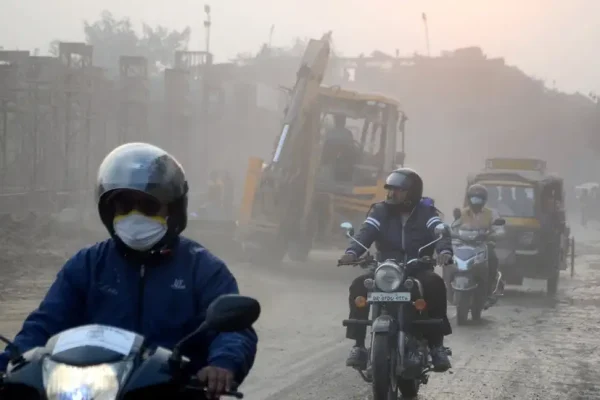Nagpur: As the winter chill begins to grip Nagpur, the city’s air quality has started to decline, with the Air Quality Index (AQI) hitting ‘Poor’ levels over the past few days. On Wednesday, data from the city’s four Continuous Ambient Air Quality Monitoring Stations (CAAQMS) indicated worsening conditions, raising concerns among residents and environmentalists alike.
The monitoring stations at Ram Nagar, Government Post Office (GPO), Town Hall in Mahal, and Ambazari reported AQI levels exceeding 200, signifying poor air quality. While the GPO station was the only one to record an AQI below 200, it remained alarmingly close to the ‘Poor’ mark.
As Nagpur transitions into the colder months, experts warn that the deteriorating air quality is a result of increased emissions from vehicles, industrial activity, and the use of wood and coal for heating. The cooler temperatures trap pollutants closer to the ground, exacerbating the issue. Authorities are urging residents to take precautionary measures, especially vulnerable groups like children, the elderly, and those with respiratory conditions.
Efforts to control pollution levels include stricter monitoring of vehicular emissions and potential temporary measures to mitigate the worsening air quality. However, the coming days will be critical in determining whether more stringent actions will be necessary to protect public health.
Nagpur has four CAAQMS in which Maharashtra Pollution Control Board (MPCB) installed three last year to get the accurate and continuous air quality status of the city. MPCB received the funds under the National Clean Air Programme (NCAP) mission initiated by the Ministry of Environment Forest and Climate Change (MoEF&CC) for the installation of the three CAAQMS. Apart from the four CAAQMS, Nagpur city has three more manual stations which also provide air quality data once in a week.
Citizens can get the real time data of all the air quality monitoring stations on the website of MPCB. However, for the last many days, the three newly installed CAAQMS’ data is not available for normal public on the website. During winter, the air quality of the city always degrades due to the small dust particles settling in the lower atmosphere.
The garbage burning, vehicular and industrial emissions and chulha burning are also some of the major reasons for deteriorating air quality during the winter season. On Wednesday, Mahal area witnessed the poorest AQI with 216 followed by Ram Nagar (210), Ambazari (210) and GPO (192).
Mahal reported this AQI at 8 am. For Ram Nagar, the highest AQI was recorded at 3 pm. Ambazari recorded above 200 AQI at 5 pm and GPO recorded it at 9 am. Similarly, on Tuesday, Ram Nagar recorded the AQI 241 at 1 pm. Ambazari was 211 at 9 pm and Mahal was 197 at 9 pm.














